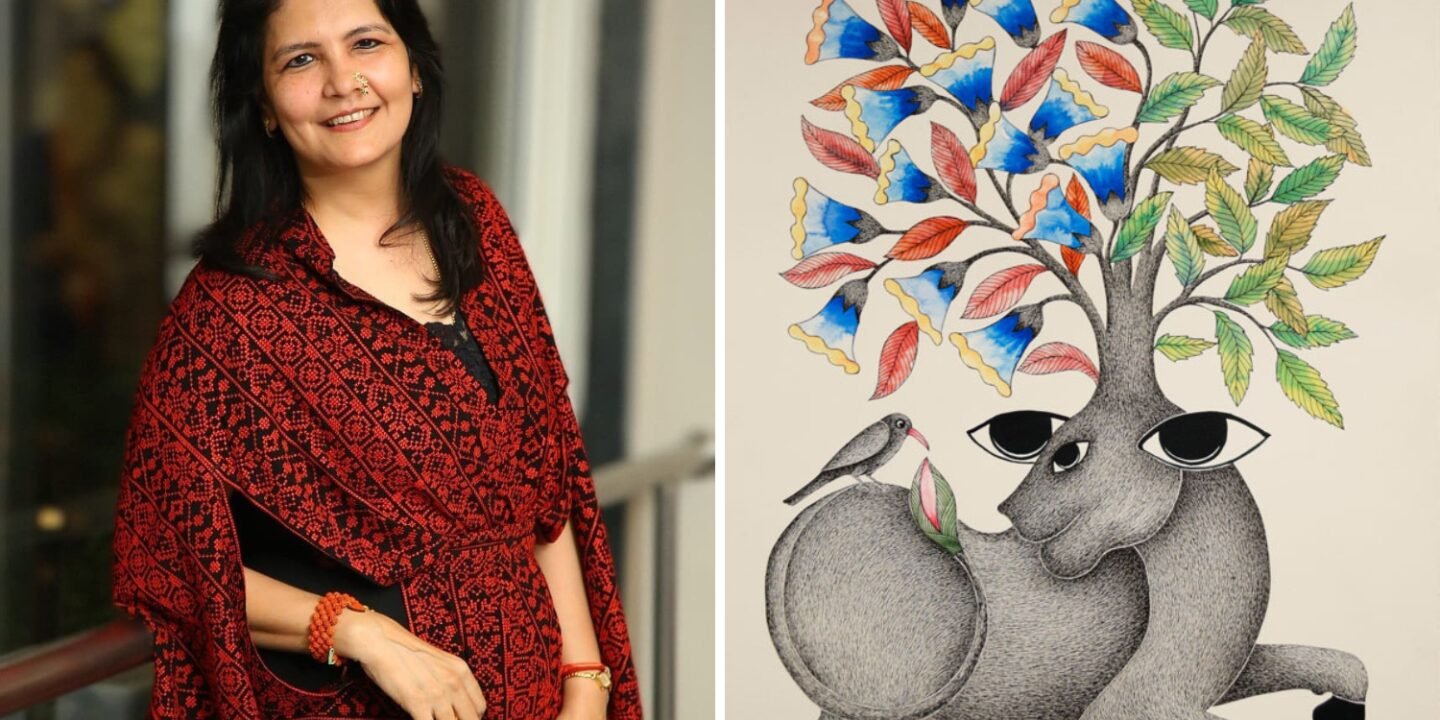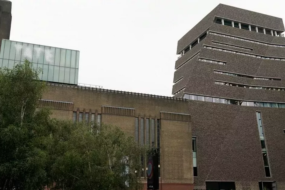
To see a Gond forest unfurling above a sleek sofa, or a Warli gathering frozen mid-step across a hallway wall in Hyderabad’s homes, is becoming increasingly likely. And what’s refreshing is that these aren’t whimsical nods to the folk arts or a vague idea of ‘Indianness.’ They are mindful affirmations that art, even at home, must mean something.
“Hyderabad has always had a sharp eye for art,” says Bhargavi Gundala, gallery director at Dhi Art Space. “But there was a time when factory-made prints took over.” They were easy, she admits. Pretty, even. “But you never knew who made them. They had no voice. No authorship.”
However, what once lived on the periphery, in rural homes or behind an archival glass, is now being welcomed into the homes of the city’s progressively-aware residents. As awareness grows, the ordinary public remembers artists’ names. They visit exhibits. And their homes have started to speak, quietly reflecting who the occupants are and what they care about. Bhargavi says that’s how honest collecting begins — “When people stop thinking art is only for white cubes or rich homes, they realise it can hold memory, place, even resistance.”
One major catalyst is travel. Museums, especially contemporary ones, are the first stops now when people travel. Bhargavi notes, “You go abroad and see how experimental and personal art can be. You come home and want some of that in your life.” Add to that the impact of big international shows like the India Art Fair or Art Dubai, and Hyderabad’s buyers are participating, with sharper questions. “In the last few years, I’ve seen so many from here show up at these fairs,” says Bhargavi.
Trove Craft’s founder, Nayantara Quader, is happy to see more people choose art that means something. Her brand works closely with oriental and folk artists. “The number of folk art exhibitions and craft revival efforts has helped people look closer,” she says.
Trove Craft’s founder, Nayantara Quader
But visibility is only part of the shift. Another is design. That could mean softer colour schemes or new surfaces to paint on — wall partitions, furniture and everyday things. “These hand-painted styles are versatile. You can see a Warli tree on a coffee table,” she points out.
Many grassroots artists are now online, selling directly. Small businesses are quietly making these crafts functional, without stripping them of meaning. Nayantara adds, “Groups like Dastkar and the Crafts Council of India are offering training and platforms. They’re building ecosystems where artists can thrive.”
A budding hunger for something real is rooted in the way we choose art. “People are tired of the copy-paste aesthetic,” says Hyderabad-born art historian and curator of Kiran Nadar Museum of Art, Srinivas Aditya Mopidevi. “It’s about living with art that speaks back. Folk and contemporary vernacular forms are no longer being admired from a safe distance.” Srinivas says, they’ve gone from being background material to becoming part of the main conversation. “People are asking, ‘Where did this come from? Who made it?’ They want to know what’s behind the brushstroke.”
When it comes to ethics, though, it’s still early stages. Some are beginning to ask the right questions, but the full complexity of these traditions are yet to be unpacked — how they’ve been shaped, and sometimes distorted, by both the contemporary art world and the market. Srinivas adds, “Just because something is visible doesn’t mean it’s been ethically understood. That assumption is something we need to challenge.”
“What’s exciting right now is this muted but clear transition,” says Rekha Lahoti, director of Kalakriti Art Gallery. “There’s a move towards handmade pieces that carry the imprint of a real person, not a machine. It’s not about perfection, it’s about presence. Supporting indigenous artists is what makes a home feel alive.”







